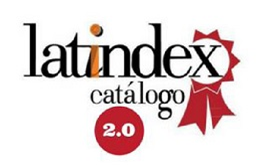Input-output tables and their usefulness in the evolution of economy
DOI:
https://doi.org/10.52292/j.eca.2019.1404Keywords:
input, product, consumption, investment, integrative accountingAbstract
This work complements a task whose main purpose was to demonstrate the capacity of accounting to integrate the effects informed by the economic entities of a country – individuals, associations, societies, governments – in the preparation of the accounts of the national product. The periodic evolution, demonstrated previously with this research, recognized the participants that consume the product of the Companies, in accounts that identify the Families, Government and Foreign an others that indicated the incidence that this annual process has on the changer that are verified in Fixes Capital and in the Exchange Goods. The technique used now, which is summarized in tables of Input Product, facilitates the subdivision of the item that represents the companies and highlights the influence that can be exercised by the different sectors that compose it.
Downloads
References
Arreghini, H. R. (2014). Unidad de criterio necesaria para la valoración informativa. Profesional & Empresaria D&G, 181,1109-1119.
Arreghini, H. R. (2015). Interpretación de la información contable hecha con la visión del economista. Profesional & Empresaria D&G, 195, 1199-1216.
Arreghini, H. R. (2016). El conflicto entre estado contable e informe social. Profesional & Empresaria D&G, 198, 253-260.
Arreghini, H. R. (2017a). Contabilidad integradora de información económica nacional. Profesional & Empresaria D&G, 210, 267-284.
Arreghini, H. R. (2017b). Los procesos integrantes y la contabilidad. Profesional & Empresaria D&G, 213, 571-580.
Arreghini, H. R. (2017c). Contabilidad integradora de información económica nacional: Estados contables para demostrar el ingreso y producto de la nación. Profesional & Empresaria D&G, 216, 843-878.
Arreghini, H. R. (2018a). Lo social y la contabilidad. Profesional & Empresaria D&G, 224, 467-478.
Arreghini, H. R. (2018b). La integración como acceso a la dirección estratégica de la organización centralizada. Enfoques de contabilidad y auditoría, 3, 64-82.
Bértora, H. R. (1975). Teoría de la contabilidad. Buenos Aires: Ediciones Macchi
Chapman, W. L. (1981). Las dificultades para medir el beneficio social derivado de la actividad económica de las organizaciones. Buenos Aires, Argentina, Anales de la Academia Nacional de Ciencias Económicas.
Di Russo, L. R. y Hauque, S. M. (1998). El acercamiento del costo contable al costo económico en la Argentina. Primer premio en el concurso del Instituto Interuniversitario de investigaciones contables.
Hauque, S. M. (2013). Propuesta de informe contable alternativo al estado de valor agregado. Santa Fe, Argentina, XXXIV Jornadas Universitarias de Contabilidad.
Mathews, R. (1974). Contabilidad para economistas. Madrid: Aguilar.
Mattessich, R. (2002). Contabilidad y métodos analíticos. Buenos Aires, La Ley.
Orgaz, R. (1950). Sociología. Córdoba: Assandri.
Plaza Mancera, R. y Villegas De Plaza, M. C. (2009). Contabilidad social. México, División de estudios profesionales de la Universidad de México
Powelson, J. P. (1958). Contabilidad económica. México: Fondo de Cultura Económica.
Rappaport, A. (2006). La creación de valor para el accionista. Buenos Aires: Ediciones Deusto.
Published
How to Cite
Issue
Section
License
Aviso de derechos de autor
Aquellos autores/as que tengan publicaciones con esta revista, aceptan los términos siguientes:
- Los autores/as conservarán sus derechos de autor y garantizarán a la revista el derecho de primera publicación de su obra, el cual estará simultáneamente sujeto a la licencia Atribución-No Comercial 4.0 Internacional CC BY-NC 4.0.
- Los autores/as podrán adoptar otros acuerdos de licencia no exclusiva de distribución de la versión de la obra publicada (p. ej.: depositarla en un archivo telemático institucional o publicarla en un volumen monográfico) siempre que se indique la publicación inicial en esta revista.
- Se permite y recomienda a los autores/as difundir su obra a través de Internet (por ej.: en páginas web institucionales o personales) una vez publicado su trabajo, lo cual puede producir intercambios interesantes y aumentar las citas de la obra publicada (Véase El efecto del acceso abierto).




















